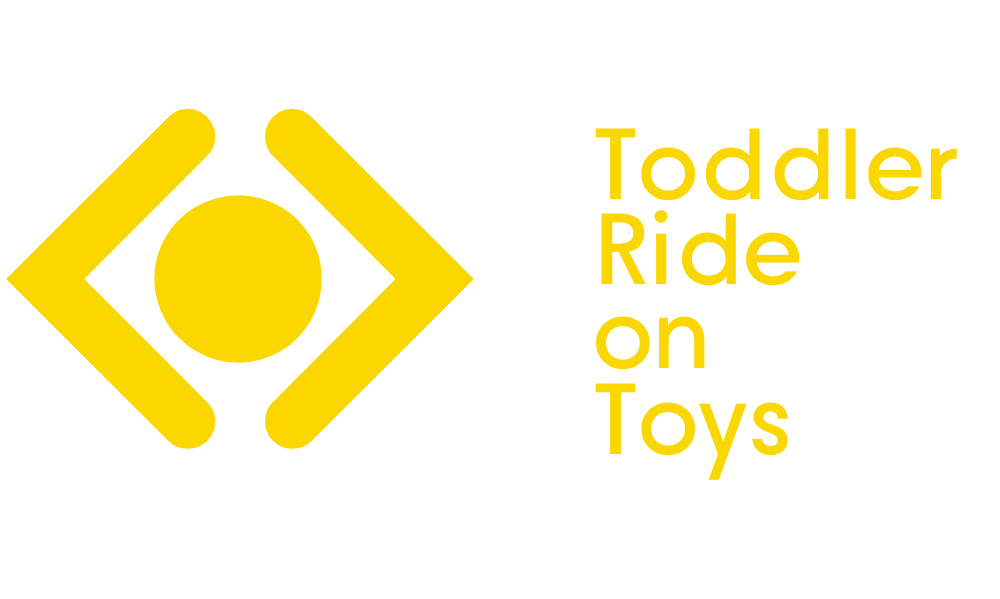Montessori Toys
What Kinds of Toys Needed for Montessori Teaching
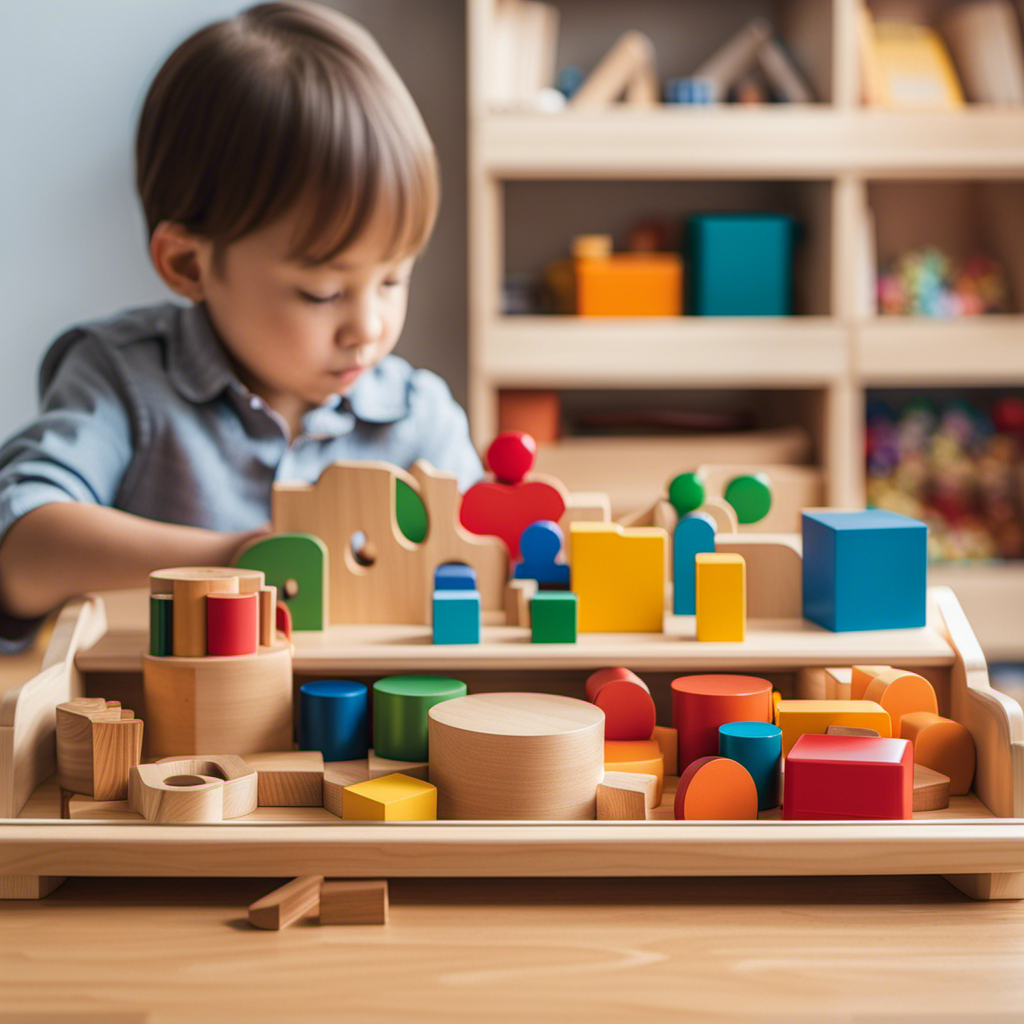
As a Montessori educator, I have come to appreciate the important role that toys play in a child’s development. Just like a sculptor carefully selects their tools, choosing the right toys for Montessori education is essential. These toys serve as our allies, guiding children towards independence and igniting a love for learning.
In this article, I will explore the benefits of Montessori toys, discuss age-appropriate options, and highlight the essential materials needed for a successful Montessori education. So, let’s dive in and uncover the magic that lies within these carefully curated playthings.
Key Takeaways
- Montessori toys encourage independent learning and exploration.
- Age-appropriate toys that promote fine motor skills, problem-solving, and creativity are needed for Montessori teaching.
- Montessori toys foster concentration, focus, and a natural desire to learn and grow.
- Toys for sensorial development play a vital role in developing fine motor skills, hand-eye coordination, and enhancing sensory capabilities.
Benefits of Montessori Toys
One of the benefits of Montessori toys is that they encourage independent learning and exploration. These toys are specifically designed to be age appropriate, meaning they are tailored to the developmental needs of each child. As a Montessori teacher, I have witnessed firsthand the positive impact these toys have on children’s learning. They promote problem-solving skills, critical thinking, and creativity.
By allowing children to explore and engage with the toys independently, they develop a sense of autonomy and confidence in their abilities. Montessori toys also foster a love for learning as they are designed to be engaging and hands-on. They provide children with opportunities to learn through play, which is essential for their cognitive, emotional, and social development.
Transitioning into the next section about age-appropriate toys for Montessori teaching, it is important to consider the specific needs of each age group.
Age-Appropriate Toys for Montessori Teaching
When selecting age-appropriate toys for Montessori instruction, it’s important to consider their educational value. Montessori teaching methods emphasize hands-on learning and independent exploration, so the toys chosen should foster these principles.
As a Montessori educator, I have found that toys which encourage fine motor skills, problem-solving, and creativity are the most effective. For younger children, simple puzzles, building blocks, and sensory toys that engage their senses are ideal.
As they grow older, toys that promote logical thinking, spatial awareness, and imagination become more suitable. Montessori toys are designed to be open-ended, allowing children to use them in various ways and promoting their natural curiosity.
By providing age-appropriate toys that align with Montessori principles, children are given the opportunity to learn and develop at their own pace.
Now, let’s explore the essential materials for Montessori education.
Essential Materials for Montessori Education
When it comes to Montessori education, having the right materials is crucial for fostering a hands-on, interactive learning experience.
Montessori toy essentials are carefully selected to promote independent exploration and develop various skills such as fine motor control and concentration.
From sensory materials like sandpaper letters to practical life activities like pouring and scooping, these materials play a vital role in creating a prepared environment that encourages curiosity, creativity, and self-discovery.
Montessori Toy Essentials
To ensure a successful Montessori teaching experience, it is important to have the essential toys needed. Montessori toy selection is crucial because it plays a significant role in fostering a child’s development and learning. Here are three key benefits of Montessori play:
-
Develops Independence: Montessori toys are designed to promote independent play and exploration. They encourage children to make choices, problem solve, and learn at their own pace.
-
Enhances Fine Motor Skills: Montessori toys focus on activities that involve manipulating objects, such as puzzles, stacking toys, and shape sorters. These toys help develop hand-eye coordination, dexterity, and concentration.
-
Fosters Concentration and Focus: Montessori toys provide opportunities for children to engage in long periods of focused play. They encourage concentration, attention to detail, and perseverance.
By providing children with the right toys, we create an environment that supports their natural desire to learn and grow.
Moving on to the next section, let’s explore the materials needed for Montessori education.
Materials for Montessori
The materials for Montessori education are carefully selected to support children’s development and learning. Montessori educators understand the importance of providing age-appropriate toys and materials that encourage sensorial development. These toys are designed to engage children’s senses and promote exploration, discovery, and problem-solving skills.
By offering a variety of textures, shapes, sizes, and colors, children are able to enhance their sensory experiences and develop their ability to make connections between objects and their environment. The benefits of sensorial development are numerous. It helps children to refine their senses, develop concentration, and improve their ability to discriminate and categorize information. As a result, children become more independent, confident, and capable learners.
Transitioning into the subsequent section about Montessori toys for sensorial development, it is important to understand the specific toys that can support this aspect of a child’s education.
Montessori Toys for Sensorial Development
One of the best ways to promote sensory development in Montessori teaching is through the use of specially-designed toys. These toys provide opportunities for sensory exploration and help children develop their fine motor skills.
For example, the Montessori Pink Tower consists of ten wooden cubes of varying sizes, allowing children to explore size and dimension while refining their hand-eye coordination. Another popular toy is the Montessori Cylinder Blocks, which require children to manipulate different-sized cylinders into corresponding holes, enhancing their grasp and hand strength. The Montessori Broad Stair is another great toy that allows children to engage in sensory exploration by arranging and stacking wooden blocks of different sizes, improving their tactile senses.
By using these toys, children not only develop their sensory capabilities but also refine their fine motor skills, setting a strong foundation for their overall development.
In promoting independence with Montessori toys, children are encouraged to explore and engage with the toys on their own, without constant guidance or intervention from adults.
Promoting Independence With Montessori Toys
When it comes to Montessori education, promoting independence and fostering self-sufficiency are key goals. Montessori toys play a crucial role in helping children develop these important life skills. These toys are carefully designed to encourage children to explore, learn, and problem-solve on their own.
Here are four ways Montessori toys promote independence and self-sufficiency:
-
Practical Life Toys: These toys mimic real-life activities such as pouring, sweeping, and buttoning, allowing children to practice essential everyday skills.
-
Self-Correcting Toys: Montessori toys are designed to provide immediate feedback, allowing children to independently correct their mistakes and learn from them.
-
Open-Ended Toys: These toys have no specific instructions or rules, encouraging children to use their imagination and creativity to play and explore.
-
Montessori Materials: These materials are specifically designed to promote independent learning and self-discovery, allowing children to work at their own pace.
By incorporating these toys into their learning environment, children develop a sense of autonomy and confidence.
Now, let’s explore how Montessori toys can also help children in language and literacy development.
Exploring Language and Literacy With Montessori Toys
As a Montessori educator, I’ve observed the powerful role of sensory play in promoting early literacy skills in young children.
Through engaging their senses, children develop a deeper understanding of language and its connection to the world around them.
Sensory play activities, such as sand or water play, tactile materials, and sensory bins, can help children explore letters, sounds, and words in a hands-on and meaningful way.
This type of play lays a strong foundation for their future literacy development.
Role of Sensory Play
To fully engage in Montessori teaching, you should incorporate sensory play into your child’s toy collection. Sensory development plays a crucial role in a child’s overall growth and learning. By providing toys and activities that stimulate their senses, you are promoting hands-on learning experiences that enhance their cognitive and physical development.
Here are three items that can help you incorporate sensory play into your child’s toy collection:
-
Sensory balls: These textured balls engage your child’s sense of touch and help develop their fine motor skills.
-
Sensory bins: Filled with materials like rice, beans, or sand, sensory bins allow children to explore different textures and stimulate their senses of sight and touch.
-
Musical instruments: Playing musical instruments not only introduces your child to different sounds and rhythms but also encourages their auditory and motor skills development.
Promoting Early Literacy
Incorporating sensory play into your child’s toy collection lays the foundation for promoting early literacy skills. Through engaging in sensory activities, children develop essential pre-reading skills that are vital for their language development.
As they explore different textures, shapes, and sounds, their senses are activated, enabling them to make connections with the world around them. This sensory stimulation enhances their ability to recognize and discriminate between different sounds, letters, and words.
By incorporating toys that encourage tactile exploration, such as textured books or alphabet puzzles, children can develop their fine motor skills and hand-eye coordination, which are essential for early reading skills. As they manipulate these toys, they begin to associate symbols with sounds, fostering their phonological awareness and letter recognition.
Transitioning to the subsequent section about mathematics and Montessori toys, a similar hands-on approach can also be applied to promote early numeracy skills.
Mathematics and Montessori Toys
Mathematics and Montessori toys go hand in hand in promoting hands-on learning experiences for young children. Through play-based learning, children are able to explore mathematical concepts in a fun and engaging way.
Montessori teaching methods emphasize the integration of technology to enhance learning. Montessori toys that incorporate technology, such as interactive counting boards or shape recognition games, provide children with opportunities to develop their mathematical skills while also familiarizing themselves with technology. These toys encourage problem-solving, critical thinking, and logical reasoning, all essential components of mathematical development.
By integrating technology into Montessori teaching, children are able to develop a strong foundation in mathematics from an early age.
As we transition to discussing Montessori toys for practical life skills, it is important to note that mathematics lays the groundwork for logical thinking and problem-solving abilities that are necessary for everyday tasks.
Montessori Toys for Practical Life Skills
After exploring the importance of mathematics in Montessori education, let’s now shift our focus to Montessori toys for practical life skills.
Practical life activities play a crucial role in the Montessori method, as they help children develop important life skills that they can carry with them throughout their lives.
Here are some examples of Montessori toys that promote practical life skills:
-
Pouring toys: These toys help children develop their fine motor skills and hand-eye coordination as they pour water or other liquids from one container to another.
-
Dressing frames: These frames feature different types of fasteners, such as buttons, zippers, and snaps, allowing children to practice and refine their dressing skills.
The benefits of these practical life skills extend beyond the classroom walls. They equip children with the ability to take care of themselves and their environment, fostering independence and self-confidence.
Now, let’s delve into the next section about using Montessori toys for cultural awareness.
Using Montessori Toys for Cultural Awareness
As an educator who values the importance of promoting global understanding and fostering cultural appreciation, I believe that using Montessori toys can be a powerful tool in achieving these goals.
By incorporating toys that represent different cultures and traditions, children are given the opportunity to learn about and appreciate the diversity of the world around them.
Through hands-on exploration and play, they can develop a sense of empathy, respect, and curiosity towards others, ultimately laying the foundation for a more inclusive and harmonious society.
Promoting Global Understanding
To promote global understanding in Montessori teaching, you can use toys that represent different cultures and countries. By providing children with these toys, they can develop a sense of global awareness and cross-cultural understanding from a young age.
As a Montessori teacher, I have seen firsthand how these toys can spark curiosity and ignite a desire to learn about different cultures. Whether it’s a set of traditional Japanese wooden blocks or a doll dressed in traditional African clothing, these toys provide a tangible way for children to explore and appreciate the diversity of our world.
Fostering Cultural Appreciation
You can foster cultural appreciation in your students by exposing them to a variety of traditions and customs from around the world. Cultural diversity is a fundamental aspect of our society, and it is important for children to develop an understanding and respect for different cultures.
By incorporating activities that highlight cultural diversity, such as celebrating holidays from different countries or engaging in multicultural storytelling, you can promote international awareness in your classroom. Encourage students to ask questions, share their own cultural experiences, and explore different traditions. This patient and observant approach allows children to develop a sense of empathy and open-mindedness towards others.
By fostering cultural appreciation, you are nurturing a generation that values diversity and embraces the richness of our global community.
Transitioning into incorporating Montessori toys in science and nature education, it is important to provide students with hands-on learning experiences that promote exploration and discovery.
Incorporating Montessori Toys in Science and Nature Education
When incorporating Montessori toys in science and nature education, it’s important to choose materials that promote exploration and hands-on learning. Science experiments and outdoor exploration are key aspects of this type of education, and the right toys can enhance these experiences.
One of my favorite Montessori toys for science and nature education is the ‘Nature Exploration Set.’ This set includes a magnifying glass, a bug viewer, and a plant press, allowing children to examine the natural world up close.
Another great option is the ‘Weather Station,’ which includes a thermometer, barometer, and wind vane, teaching children about weather patterns and measurements.
Lastly, the ‘Solar System Puzzle’ is a fantastic toy for learning about space and the planets.
By incorporating these toys into science and nature education, children can engage in hands-on learning and develop a deeper understanding of the world around them.
Now, let’s move on to some tips for choosing the right Montessori toys.
Tips for Choosing the Right Montessori Toys
One important tip for choosing the right Montessori toys is to consider the age and developmental stage of the child. When it comes to Montessori education, the toys used play a crucial role in facilitating learning and development.
Montessori toy principles emphasize the importance of choosing appropriate toys that align with the child’s interests and abilities. As a Montessori educator, I have observed that these toys should be open-ended, allowing children to explore and create freely. They should also be made of natural materials, such as wood, to provide a sensory experience.
Furthermore, Montessori toys should promote independence and problem-solving skills, encouraging children to think critically and develop their cognitive abilities. By carefully selecting Montessori toys, we can create an environment that fosters curiosity, creativity, and lifelong learning in children.
Frequently Asked Questions
How Can Montessori Toys Help Children Develop Problem-Solving Skills?
Montessori toys play a crucial role in developing problem-solving skills. They engage children in hands-on activities that stimulate their minds and encourage critical thinking. Through sensory integration, children learn to explore and manipulate objects, enhancing their problem-solving abilities.
Imaginative play with Montessori toys allows children to think creatively and come up with innovative solutions. Furthermore, these toys promote fine motor skills, enabling children to develop dexterity and coordination.
Montessori toys also provide cultural education, exposing children to different traditions and fostering a global perspective.
Are There Any Specific Montessori Toys That Can Aid in Sensory Integration for Children With Special Needs?
When it comes to sensory integration for children with special needs, Montessori toys can be a game-changer. These toys are designed to engage the senses and promote exploration in a gentle and supportive way.
From textured balls to sensory boards, Montessori toys provide the perfect tools for children to enhance their sensory processing skills. By incorporating these toys into their playtime, children with special needs can develop a greater understanding of their senses and improve their overall sensory integration abilities.
Can Montessori Toys Be Used to Encourage Imaginative Play?
Encouraging imaginative play is an essential aspect of Montessori teaching. It allows children to explore their creativity, problem-solving skills, and social interactions.
By providing open-ended toys and materials, children have the freedom to use their imagination and create their own narratives. This type of play also enhances cognitive development, language skills, and emotional expression.
Montessori toys, such as building blocks or pretend play sets, can effectively stimulate imaginative play and provide numerous benefits for a child’s overall development.
Are There Any Montessori Toys That Can Help Children Develop Fine Motor Skills?
There are definitely Montessori toys that can help children develop fine motor skills. These toys are designed to engage children in hands-on activities that require precise movements.
For example, building blocks or puzzles can help strengthen hand-eye coordination and dexterity. Additionally, toys like bead stringing or buttoning boards can improve finger control and grip strength.
Montessori toys for cognitive development and language development also often incorporate fine motor skills, encouraging children to manipulate objects while engaging in learning activities.
Can Montessori Toys Be Used to Teach Children About Different Cultures and Traditions?
Using Montessori toys for teaching diversity and different cultures is a wonderful way to introduce children to the world around them. These toys can help children develop a sense of empathy and appreciation for different traditions and customs.
By incorporating Montessori toys that represent various cultures, children can engage in hands-on learning experiences that promote cultural understanding and respect.
It’s important to provide a diverse range of Montessori toys that reflect the multicultural world we live in, allowing children to explore and celebrate our differences.
Conclusion
In conclusion, it’s clear that Montessori toys play a crucial role in a child’s development. These educational tools promote independence and foster practical life skills. Montessori toys are a treasure trove of learning opportunities, allowing children to explore their senses, gain cultural awareness, and delve into the wonders of science and nature.
So, dear reader, choose your Montessori toys wisely and watch as your little ones embark on a journey of discovery and growth. Happy toy hunting!
Tina is the heart and soul behind Toddler Ride On Toys. With a passion for early childhood education and a deep understanding of child development, Tina ensures that every piece of content on our website reflects our commitment to playful learning. Her expertise in Montessori, Preschool, STEM, and Waldorf education philosophies helps shape our website into a valuable resource for parents, caregivers, and educators.
Montessori Toys
3 Best Safe Non-Toxic Materials for Children’s Toys

Our research has identified the top three materials for children’s toys that are safe and free from toxins.
Wood, organic cotton, and BPA-free plastic are the best choices for parents who want to ensure the safety of their little ones.
These materials are not only free from harmful chemicals, but they are also durable and eco-friendly.
In this article, we will delve into the benefits of each material and provide recommendations for the best toys made from them.
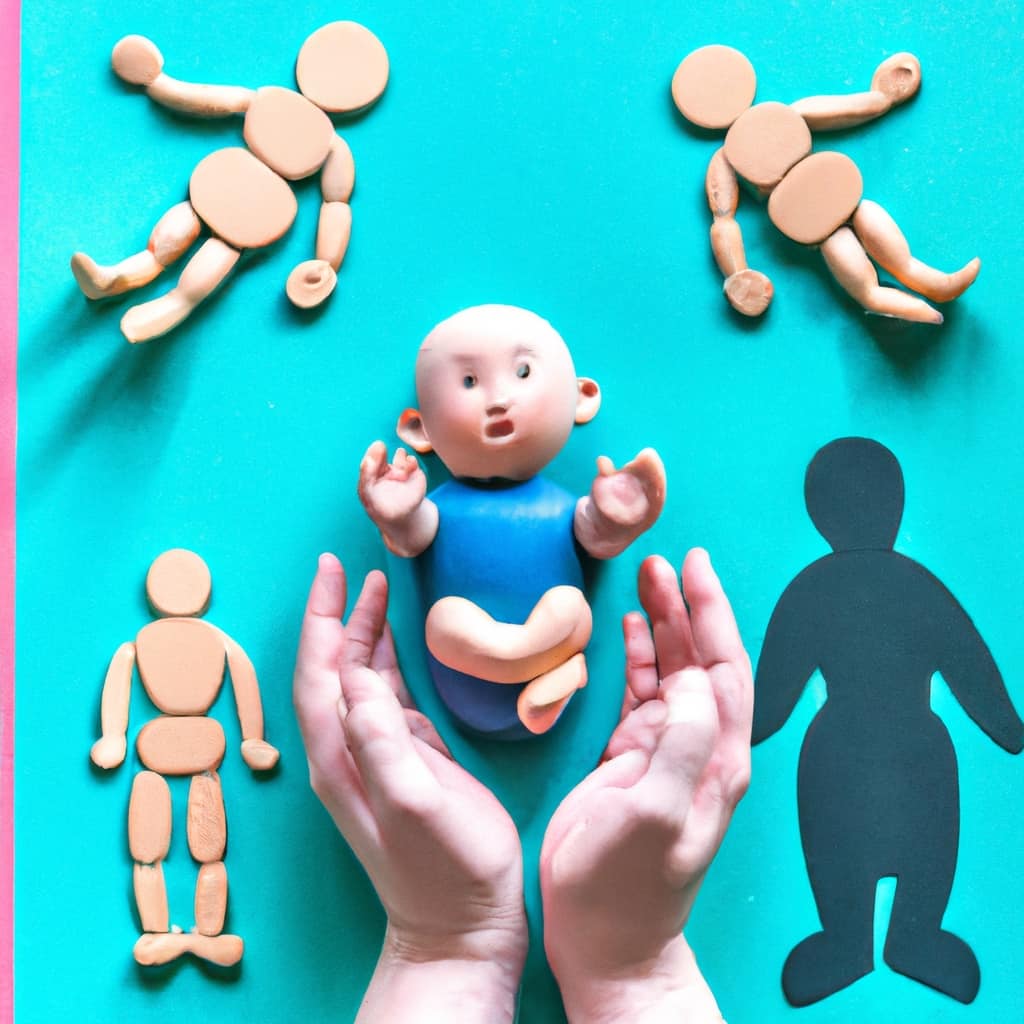
Key Takeaways
- Wood is a durable and long-lasting material, making it a safe and non-toxic option for children’s toys.
- Organic cotton is a gentle and hypoallergenic material that promotes a healthier environment and supports fair trade practices.
- BPA-free plastic eliminates the risk of exposure to harmful chemicals and provides peace of mind for parents.
- Toys made from wood and organic cotton have a long lifespan and can be passed down to future generations, making them a sustainable and eco-friendly choice.
Wood
Wood is one of our favorite materials for children’s toys due to its durability and natural beauty. Wooden puzzles and wooden building blocks are classic toys that provide endless hours of entertainment and educational value for children.
Wooden puzzles aren’t only fun to play with, but they also help develop problem-solving and fine motor skills. They come in various shapes and sizes, catering to different age groups.
Wooden building blocks, on the other hand, encourage creativity and imagination. Children can build structures, towers, and even create their own mini worlds using these blocks.
Wood is a safe and non-toxic material, making it ideal for children’s toys. Its sturdy nature ensures that these toys can withstand rough play and last for years, making them a great investment for both parents and caregivers.
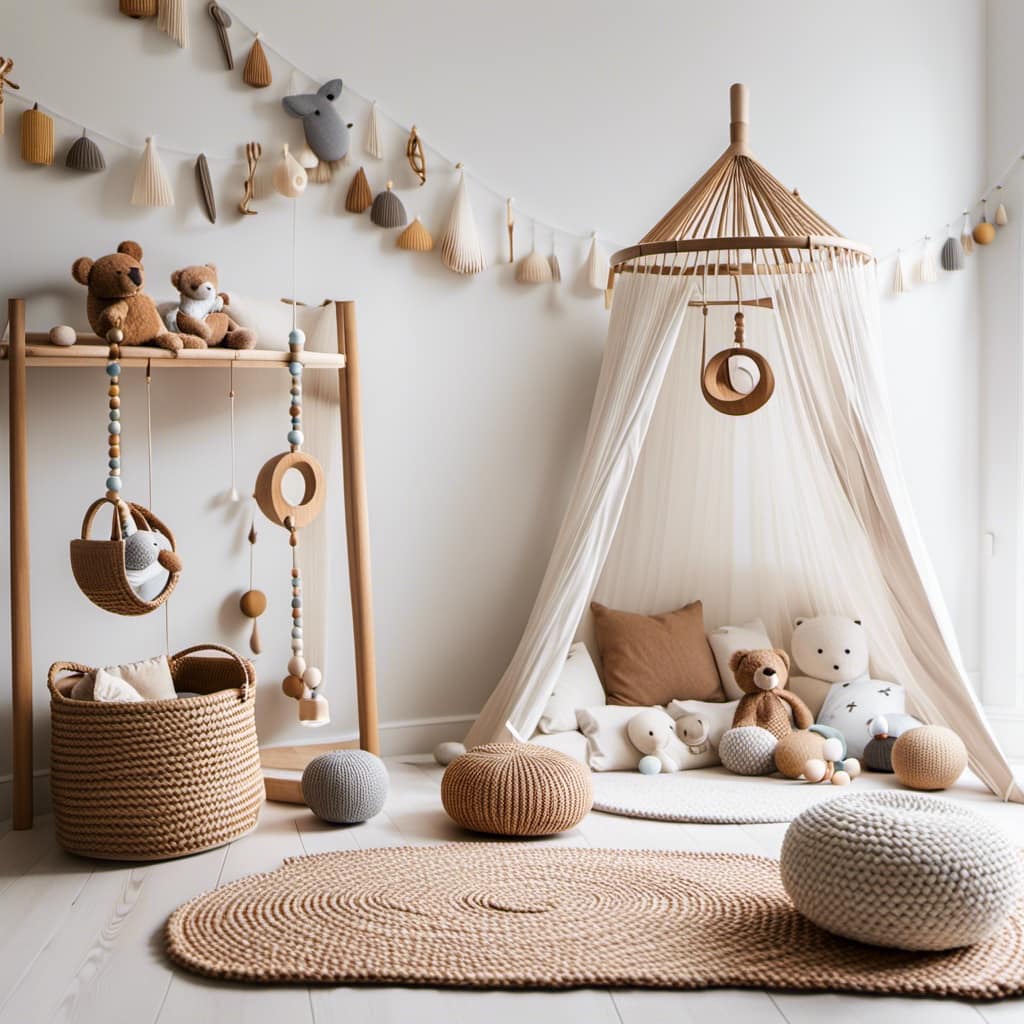
Organic Cotton
Moving on from wood, another excellent safe and non-toxic material for children’s toys is organic cotton. Organic cotton toys offer several benefits for both children and the environment. Here are some key points to consider:
- Chemical-free: Organic cotton is grown without the use of harmful pesticides or synthetic fertilizers, making it a safer option for children to play with.
- Hypoallergenic: Organic cotton is gentle on sensitive skin, making it suitable for children with allergies or sensitivities.
- Sustainable: Organic cotton farming practices promote soil health and biodiversity, reducing the overall impact on the environment.
The impact of organic cotton farming on the environment is significant. By avoiding the use of harmful chemicals, it helps preserve soil quality, reduces water pollution, and protects wildlife. Additionally, organic cotton production supports fair trade practices and ensures a safer working environment for farmers.
Choosing organic cotton toys not only promotes child safety but also contributes to a healthier planet for future generations.
BPA-Free Plastic
One option to consider for safe and non-toxic children’s toys is BPA-free plastic. BPA, or bisphenol A, is a chemical commonly found in plastic products that has been linked to various health risks, especially in children. BPA can leach out of plastic toys and enter the body when children put them in their mouths or handle them extensively.
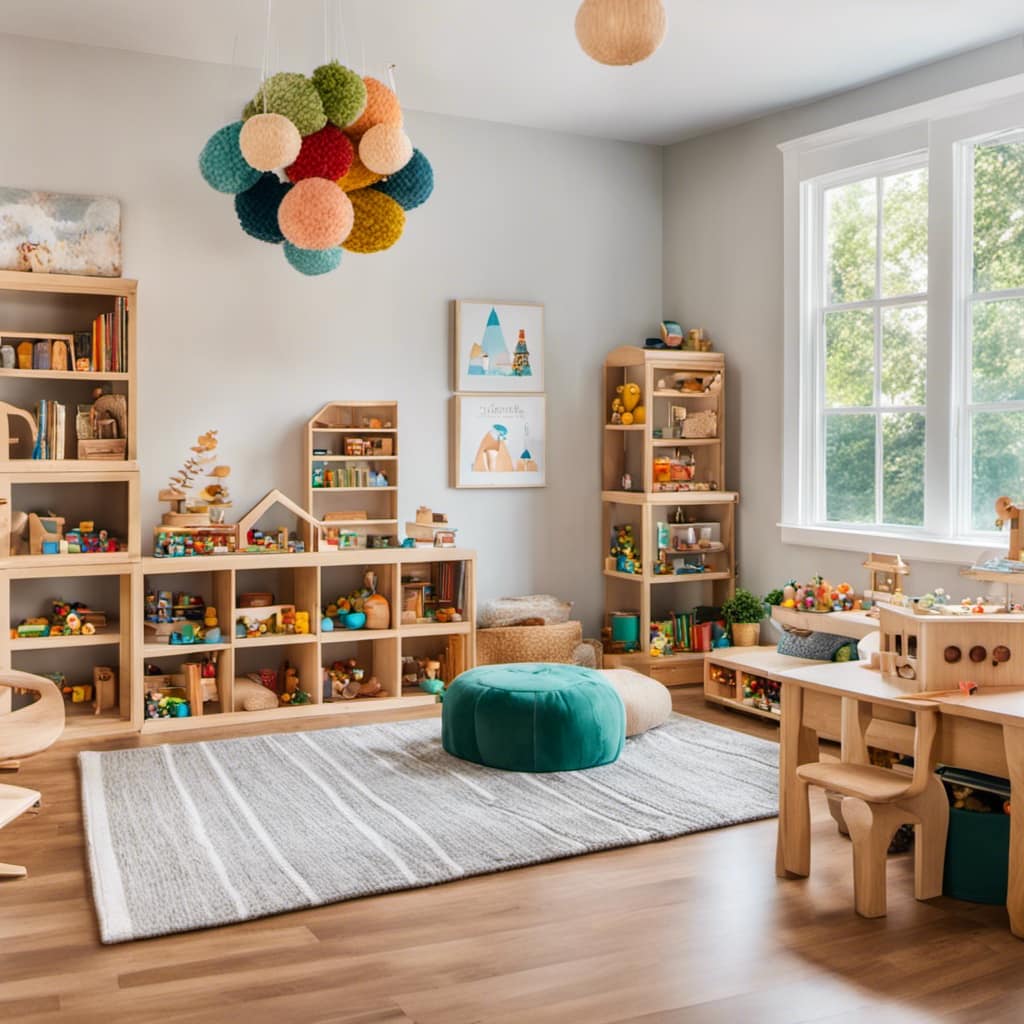
To address these concerns, manufacturers have started producing toys made from BPA-free plastic, which eliminates the risk of exposure to this harmful chemical. These eco-friendly alternatives provide parents with peace of mind, knowing that their children can play with toys that are safe and non-toxic.
When choosing children’s toys, it’s important to prioritize their health and well-being by opting for BPA-free plastic options.
Frequently Asked Questions
Are There Any Specific Safety Standards or Certifications That Parents Should Look for When Purchasing Wooden Toys for Their Children?
When purchasing wooden toys for our children, it’s important to look for safety standards and certifications. Reading labels helps ensure non-toxic materials. Be cautious of toxic finishes or paints that pose potential risks.
Is Organic Cotton Used as a Stuffing Material in Plush Toys Completely Free of Chemicals and Pesticides?
Organic cotton toys: Are they truly chemical free and safe? We’ve got the scoop. Choosing organic cotton for your little ones means you’re opting for a safer, non-toxic playtime experience.
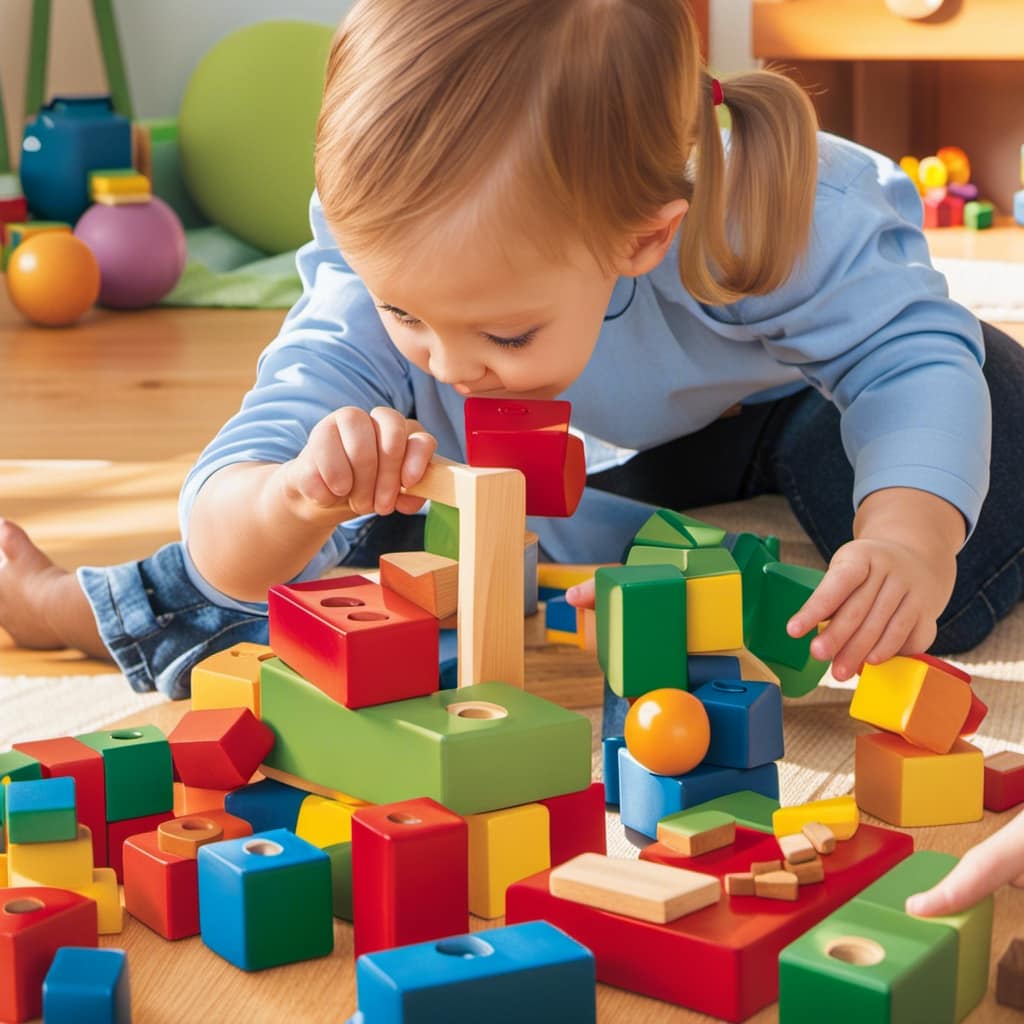
Can Bpa-Free Plastic Toys Still Contain Other Potentially Harmful Chemicals?
Yes, BPA-free plastic toys may still contain other potentially harmful chemicals. To minimize concerns about chemical exposure, consider alternative materials for children’s toys, such as wooden or organic cotton options, which are eco-friendly.
How Can Parents Ensure That the Wooden Toys They Purchase Are Not Treated With Toxic Finishes or Paints?
Parents play a vital role in promoting safe play for their children. Understanding the importance of non-toxic toys is crucial. To ensure wooden toys are safe, research brands that prioritize natural, non-toxic finishes and paints.
Are There Any Potential Health Risks Associated With the Use of Organic Cotton Toys, Such as Allergies or Sensitivities?
There may be potential health risks associated with organic cotton toys, such as allergies or sensitivities. It’s important for parents to be aware and consider any potential reactions when choosing toys for their children.
Conclusion
In conclusion, when it comes to choosing safe and non-toxic materials for children’s toys, nothing beats the timeless charm of wood. Its durability and natural beauty make it a perfect choice for little ones.

Additionally, organic cotton provides a soft and chemical-free option for cuddly toys.
And let’s not forget about BPA-free plastic, which offers a safe and sturdy alternative for certain toys.
With these top three materials, you can ensure that your child’s toys are both fun and safe.
Mila, a gifted writer with a heart brimming with enthusiasm for child development and playful learning, is the creative force behind the enchanting narratives and insightful articles that grace Toddler Ride On Toys. With a background in early childhood education and a genuine passion for nurturing young minds, Mila weaves words that captivate, educate, and inspire parents, caregivers, and educators.
Montessori Toys
Top 5 Quality Producers of Learning Toys

We have searched the market to bring you the top educational toy manufacturers. These five companies excel in creating toys that are educational and engaging for children.
Melissa & Doug, PlanToys, Hape, Grimm’s, and Learning Resources have all earned their spots on our prestigious list. Get ready to discover the finest quality toys that will inspire learning and imagination in your little ones.
Let’s dive into the world of these outstanding producers and explore their exceptional creations.
Key Takeaways
- Melissa & Doug, PlanToys, Hape, Grimm’s, and Learning Resources are the top producers of learning toys.
- These brands prioritize sustainability, using organic materials, non-toxic dyes, and child-safe finishes.
- The learning toys offered by these brands stimulate cognitive, physical, and social skills, as well as creativity and problem-solving abilities.
- Incorporating learning resources in early childhood education enhances problem-solving skills, critical thinking abilities, effective communication, creativity, and independent exploration.
Melissa & Doug
The article discusses the quality of learning toys produced by Melissa & Doug. Melissa & Doug is a renowned brand that offers a wide range of learning toys for early childhood development. These toys provide numerous benefits for children’s learning and development.
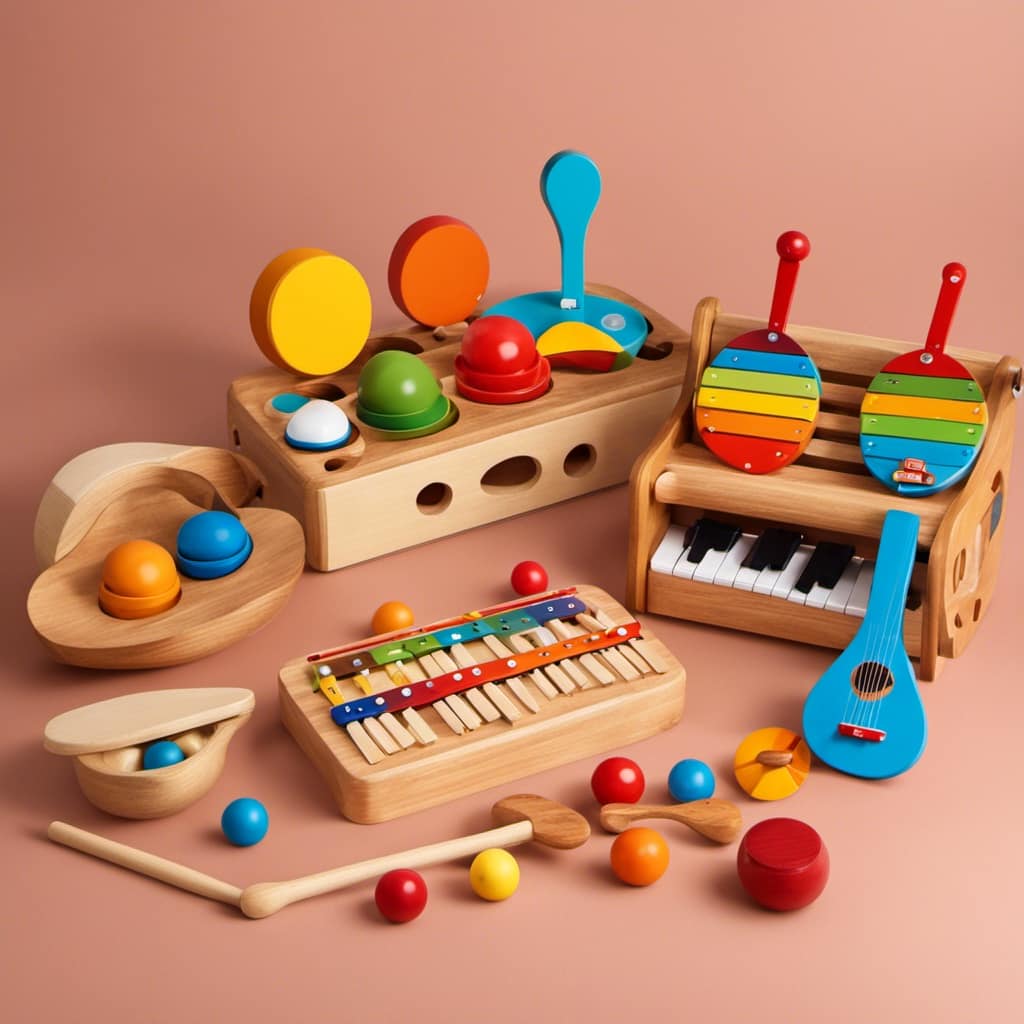
One of the key advantages of Melissa & Doug learning toys is their ability to promote imaginative play. Through imaginative play, children can explore their creativity, problem-solving skills, and social interactions. These toys encourage children to use their imagination, which is crucial for their cognitive and emotional growth.
Melissa & Doug toys are designed to engage children in hands-on activities, allowing them to learn through exploration and play. Transitioning into the subsequent section about plantoys, it’s important to consider the different approaches and features offered by various toy producers.
PlanToys
Introducing PlanToys, a leading producer of learning toys that prioritize sustainability and child development. PlanToys is known for their eco-friendly toys and sustainable play options, making them a top choice for environmentally conscious parents.
PlanToys takes pride in their commitment to using organic materials and non-toxic dyes in their products. They also prioritize sustainable manufacturing practices, ensuring that their toys are made in an environmentally friendly manner.
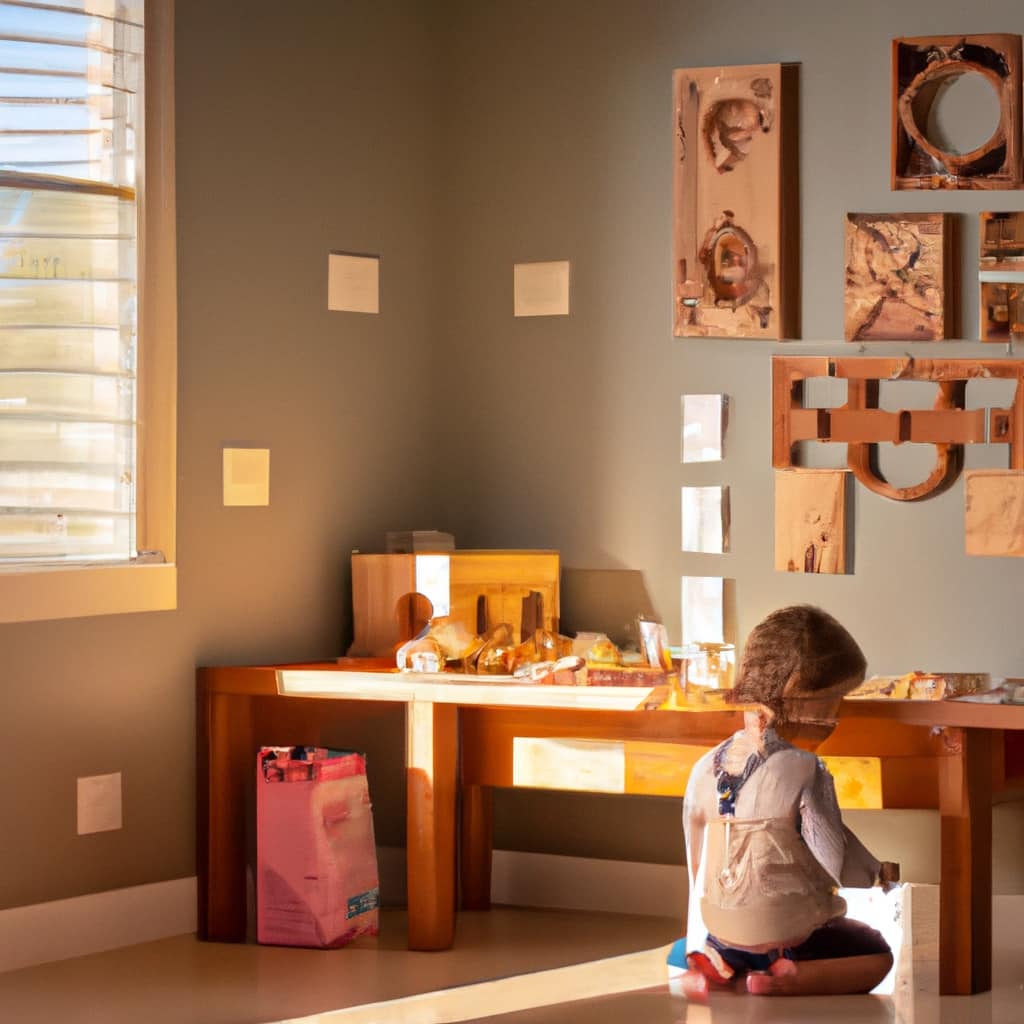
One of the key features of PlanToys is their focus on child development. Their toys are designed to stimulate different aspects of a child’s growth, including cognitive, physical, and social skills. From building blocks to puzzles, PlanToys offers a wide range of options that encourage creativity, problem-solving, and imagination.
With their dedication to sustainability and child development, PlanToys is a brand that not only provides high-quality learning toys, but also contributes to a better future for our planet.
Hape
Continuing our exploration of top quality producers of learning toys, let’s now turn our attention to Hape, a brand that shares a similar commitment to sustainability and child development.
Hape is known for their innovative learning toys that engage children in interactive play while promoting their cognitive, physical, and social development.
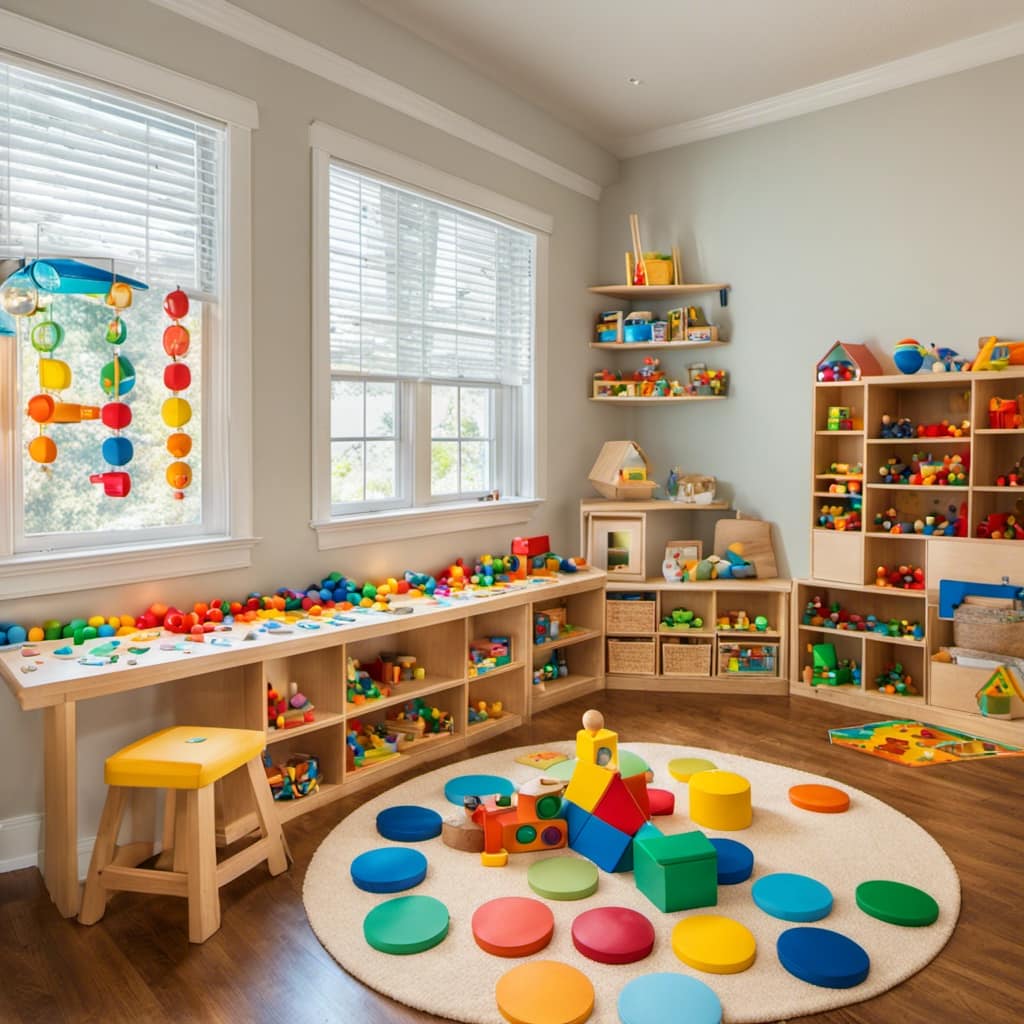
Hape offers a wide range of toys that cater to various age groups and developmental stages. From wooden puzzles and building blocks to musical instruments and pretend play sets, Hape toys provide endless opportunities for children to explore, learn, and grow.
What sets Hape apart is their dedication to using sustainable materials and non-toxic, child-safe finishes. Their toys are designed to withstand years of play, ensuring durability and longevity. Additionally, Hape toys encourage creativity, problem-solving skills, and imaginative play, fostering a well-rounded development in children.
With Hape’s innovative learning toys, children can have fun while acquiring essential skills and knowledge. By investing in Hape toys, parents can provide their children with the tools they need to thrive and succeed.
Grimm’s
Now let’s delve into Grimm’s, another quality producer of learning toys that complements Hape’s commitment to sustainability and child development.
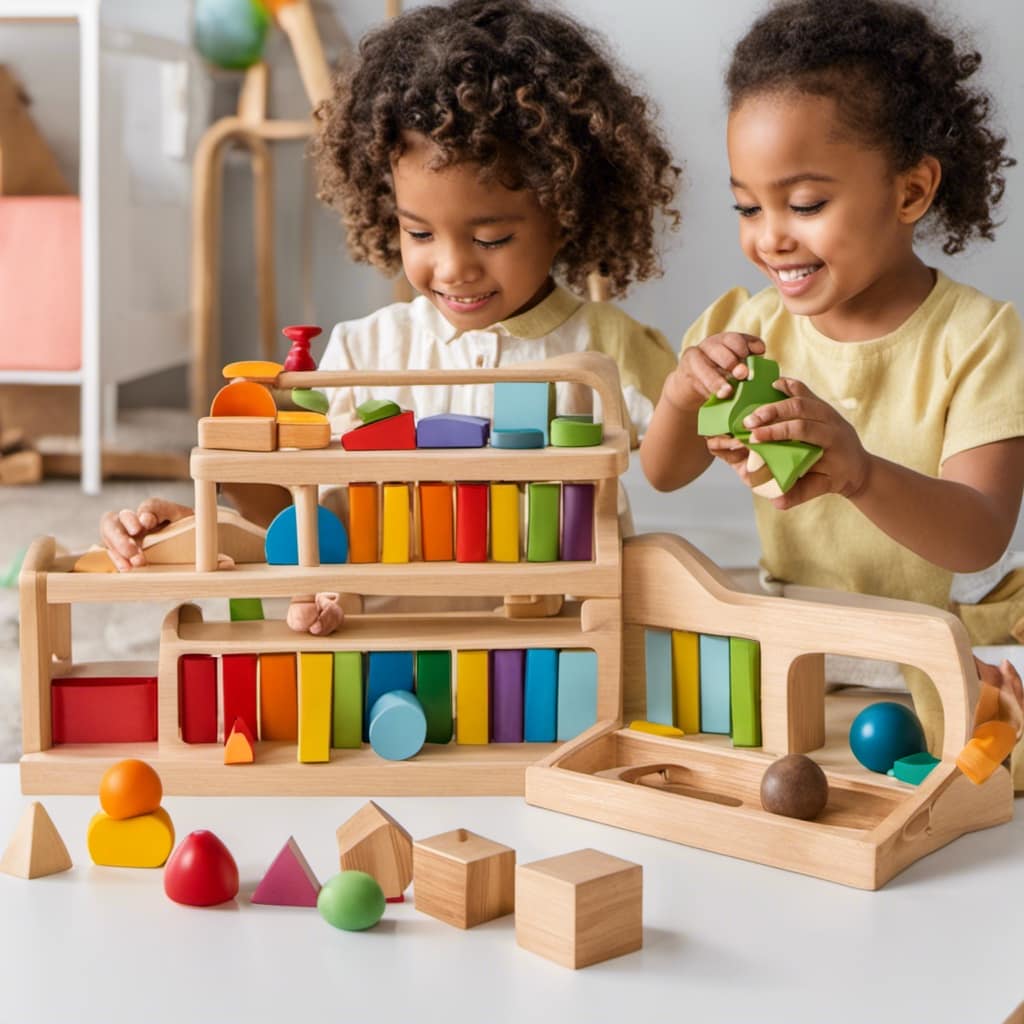
Grimm’s is renowned for their unique wooden toys that promote imaginative play and open-ended learning. Here are some key benefits of Grimm’s toys:
-
Encourages Creativity: Grimm’s toys are designed to inspire children’s creativity and imagination. With their vibrant colors and versatile shapes, children can explore endless possibilities and create their own stories and scenarios.
-
Enhances Problem-Solving Skills: The open-ended nature of Grimm’s toys encourages children to think critically and find solutions to different challenges. Whether it’s building structures or creating intricate patterns, children develop problem-solving skills while having fun.
-
Promotes Fine Motor Skills: Manipulating and arranging the various wooden pieces in Grimm’s toys helps children refine their fine motor skills. From stacking blocks to arranging puzzles, these toys provide hands-on experiences that strengthen hand-eye coordination and dexterity.

-
Sustainable and Eco-Friendly: Grimm’s is committed to sustainability and uses high-quality, natural materials such as wood and non-toxic paints. Their toys are ethically produced, ensuring a safe and eco-friendly playtime experience for children.
Grimm’s toys offer a world of possibilities for children, fostering their development while providing endless hours of engaging play.
Learning Resources
Learning Resources provides a wide range of educational toys and materials designed to enhance children’s learning experiences. Incorporating learning resources in early childhood education offers numerous benefits. These resources help children develop essential skills such as problem-solving, critical thinking, communication, and creativity. They also promote cognitive development, improve fine motor skills, and enhance hand-eye coordination. By engaging with learning toys, children are encouraged to explore, experiment, and discover new concepts independently.
Choosing the right learning toys for your child’s development is crucial. Consider their age, interests, and developmental stage. Look for toys that are age-appropriate and align with their learning goals. Consider toys that encourage imaginative play, promote sensory exploration, and offer hands-on learning experiences. Look for toys that are durable, safe, and made from high-quality materials.
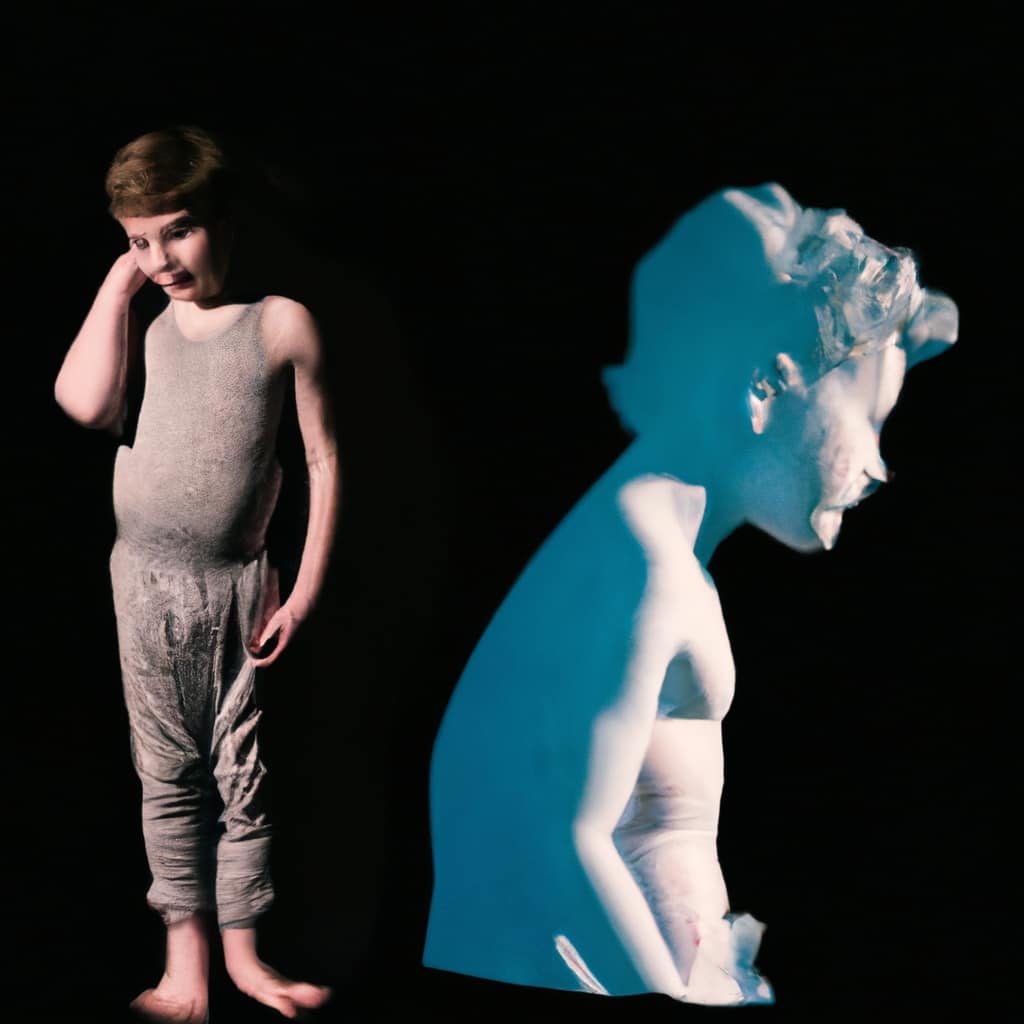
Additionally, involve your child in the decision-making process to foster their independence and encourage their engagement with the learning resources.
Frequently Asked Questions
What Are the Specific Age Ranges That Melissa & Doug’s Learning Toys Cater To?
Melissa & Doug’s learning toys cater to specific age ranges, offering advantages for each group. The toys are designed to promote cognitive development, fine motor skills, and creative thinking in toddlers, preschoolers, and elementary school children.
Are Plantoys’ Learning Toys Made From Sustainable Materials?
Yes, PlanToys’ learning toys are made from sustainable materials. Using eco-friendly materials in children’s toys not only benefits the environment but also teaches kids about sustainability and responsible consumption.
Does Hape Offer Any Educational Resources or Guides to Accompany Their Learning Toys?
Incorporating educational resources with learning toys has several benefits. Parents can utilize educational guides to enhance their child’s learning experience with Hape toys by providing additional information, activities, and guidance for interactive and educational play.

Are Grimm’s Learning Toys Suitable for Children With Special Needs?
Grimm’s learning toys for children with sensory needs can be adapted to suit different abilities. We can explore ways to modify the toys to provide a stimulating and inclusive learning experience for all children.
Can Learning Resources’ Learning Toys Be Used for Homeschooling Purposes?
Using learning toys for homeschooling has both pros and cons. They can enhance educational development by promoting active learning, but may also limit social interaction. Consider the impact on your child’s overall learning experience.
Conclusion
In conclusion, when it comes to quality producers of learning toys, Melissa & Doug, PlanToys, Hape, Grimm’s, and Learning Resources stand out for their commitment to creating educational and engaging products.
These brands offer a wide range of toys that promote cognitive development, creativity, and problem-solving skills in children. With their attention to detail, use of sustainable materials, and innovative designs, these companies have earned their reputation as leaders in the industry.

By investing in toys from these producers, parents can ensure that their children receive the best tools for learning and growth.
Mila, a gifted writer with a heart brimming with enthusiasm for child development and playful learning, is the creative force behind the enchanting narratives and insightful articles that grace Toddler Ride On Toys. With a background in early childhood education and a genuine passion for nurturing young minds, Mila weaves words that captivate, educate, and inspire parents, caregivers, and educators.
Montessori Toys
5 Best Economical Options for Kids’ Montessori Toys

Finding affordable Montessori toys for kids can be a challenge. But fret not! We have put together a list of the top budget-friendly options just for you.
With our expert knowledge and research, we’ve found the top brands that won’t break the bank. Get ready to provide quality educational toys for your little ones without draining your wallet.
Let’s dive in and explore the five best economical options for kids’ Montessori toys.
Key Takeaways
- Materials used in construction, complexity of design, brand reputation, and quality and durability of materials are factors that affect Montessori toy costs.
- Lovevery, Hape, Melissa & Doug, and PlanToys are top affordable Montessori toy brands known for their quality and child-friendly designs.
- To find budget-friendly Montessori toys, consider open-ended toys, DIY options, budget-friendly subscription services, sales and discounts, and second-hand options from online marketplaces and thrift stores.
- Cost-effective DIY Montessori toy ideas include repurposing household items, finding items at thrift stores, DIY projects, and using nature-inspired toys and everyday household objects.
Factors Affecting Montessori Toy Costs
Factors that impact Montessori toy costs include materials, complexity, and brand reputation.
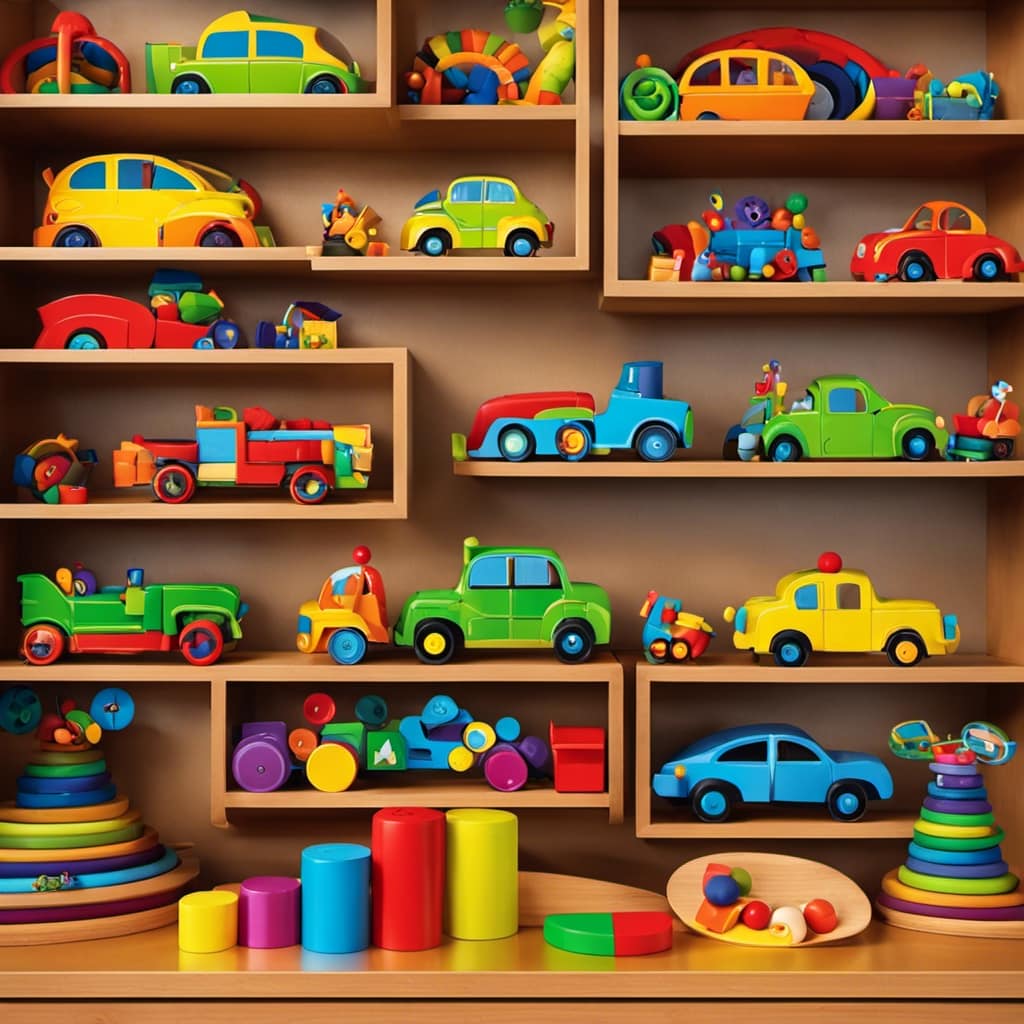
The quality of materials used in the construction of Montessori toys plays a significant role in determining their cost. High-quality materials, such as sustainably sourced wood or natural fabrics, tend to be more expensive, but they also ensure durability and safety for your child. On the other hand, cheaper materials may compromise the toy’s quality and longevity.
Brand reputation also influences Montessori toy prices. Well-established brands with a proven track record of producing high-quality educational toys are likely to charge more for their products. This is because they’ve invested in research and development, ensuring that their toys meet the educational standards of the Montessori method. However, there are also smaller, independent brands that offer affordable options without compromising on quality.
Understanding the impact of material quality and brand reputation on Montessori toy costs can help you make informed decisions when selecting toys for your child. By considering these factors, you can strike a balance between affordability and quality, ensuring that your child receives the best educational experience without breaking the bank.
Top Affordable Montessori Toy Brands
One of our favorite affordable Montessori toy brands is Lovevery. Lovevery offers Montessori inspired toy subscription services that deliver age-appropriate toys right to your doorstep. Their toys are designed to stimulate learning and promote development in children from birth to age four. Lovevery toys are crafted with high-quality materials and are designed to be durable, ensuring they can withstand the active play of young children.
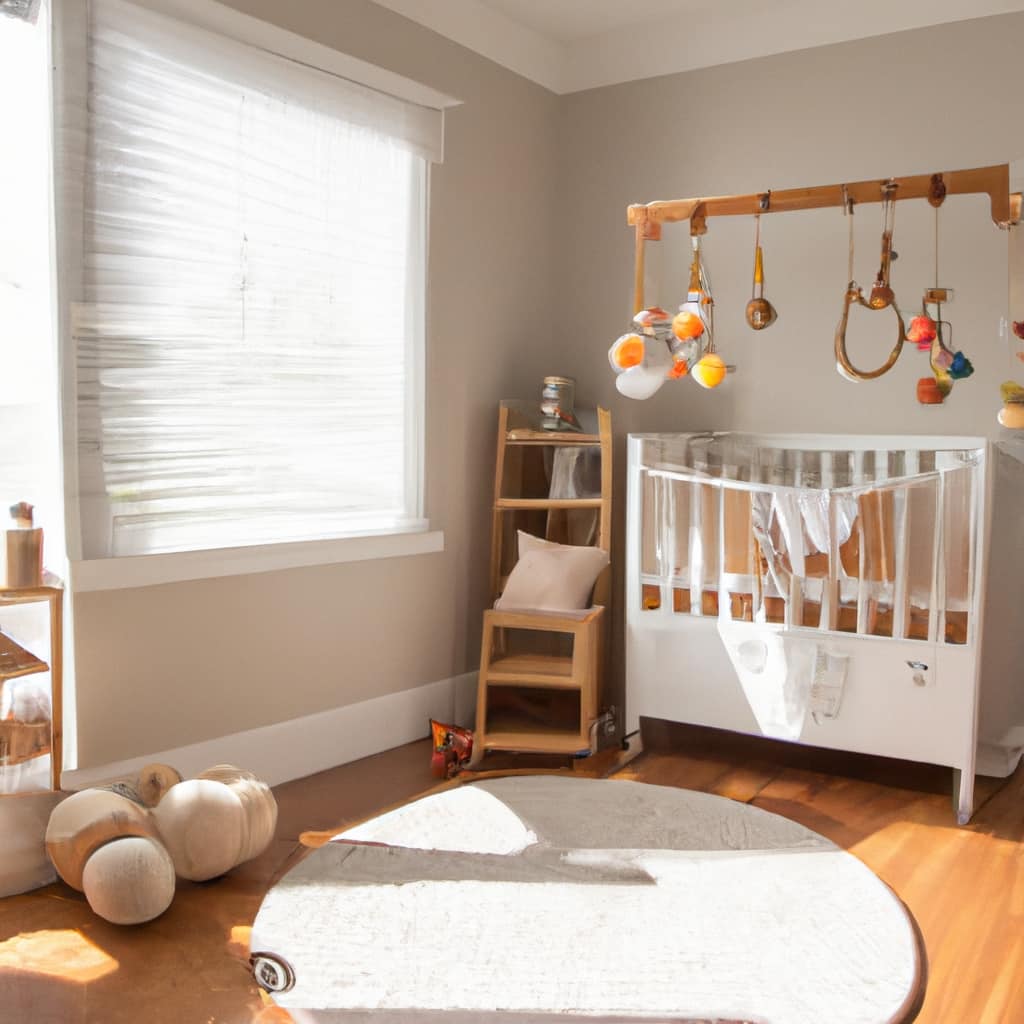
Another great option for affordable Montessori toys is to explore second-hand options. Websites such as eBay, Craigslist, and local buy/sell groups often have listings for gently used Montessori toys at a fraction of the original price. By opting for second-hand Montessori toys, you not only save money but also contribute to a sustainable and eco-friendly approach to toy shopping.
Budget-Friendly Montessori Toy Recommendations
After exploring affordable Montessori toy brands such as Lovevery and considering second-hand options, we can now discuss some budget-friendly recommendations for Montessori toys.
When it comes to affordable Montessori toy alternatives, there are a few options to consider. Firstly, you can opt for open-ended toys that can be used in multiple ways, such as wooden blocks or stacking rings. These toys promote creativity and problem-solving skills while being cost-effective.
Another budget-friendly option is to DIY Montessori-inspired toys using materials you already have at home. Repurposing everyday objects like empty containers or fabric scraps can make for engaging and educational toys.
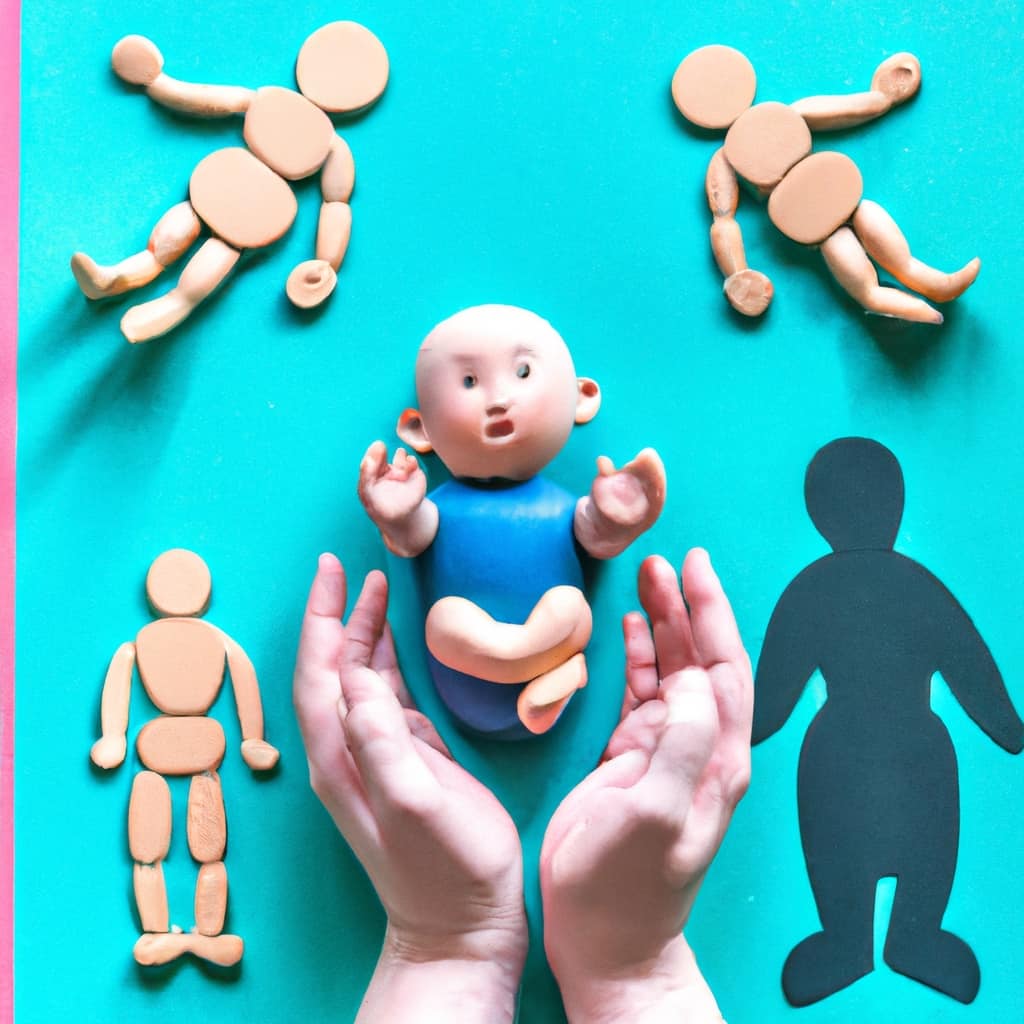
Additionally, some companies offer budget-friendly Montessori toy subscription services, which provide a variety of age-appropriate toys each month at a lower cost than purchasing individual toys. These subscription services allow your child to experience a range of Montessori-inspired activities without breaking the bank.
Tips for Finding Affordable Montessori Toys
To maximize our budget and find affordable Montessori toys, we can utilize effective strategies for sourcing cost-effective options. Here are three tips for finding affordable Montessori toys:
-
Secondhand Montessori toys: Consider purchasing gently used Montessori toys from online marketplaces, local thrift stores, or through local parent groups. Many families sell or donate their gently used toys, allowing you to save money while still providing your child with quality Montessori materials.
-
Sales and discounts on Montessori toys: Keep an eye out for sales and discounts on Montessori toys from various retailers. Sign up for newsletters or follow social media accounts of Montessori toy brands to stay updated on any promotions or special offers. This way, you can snag some great deals and save money on your purchases.
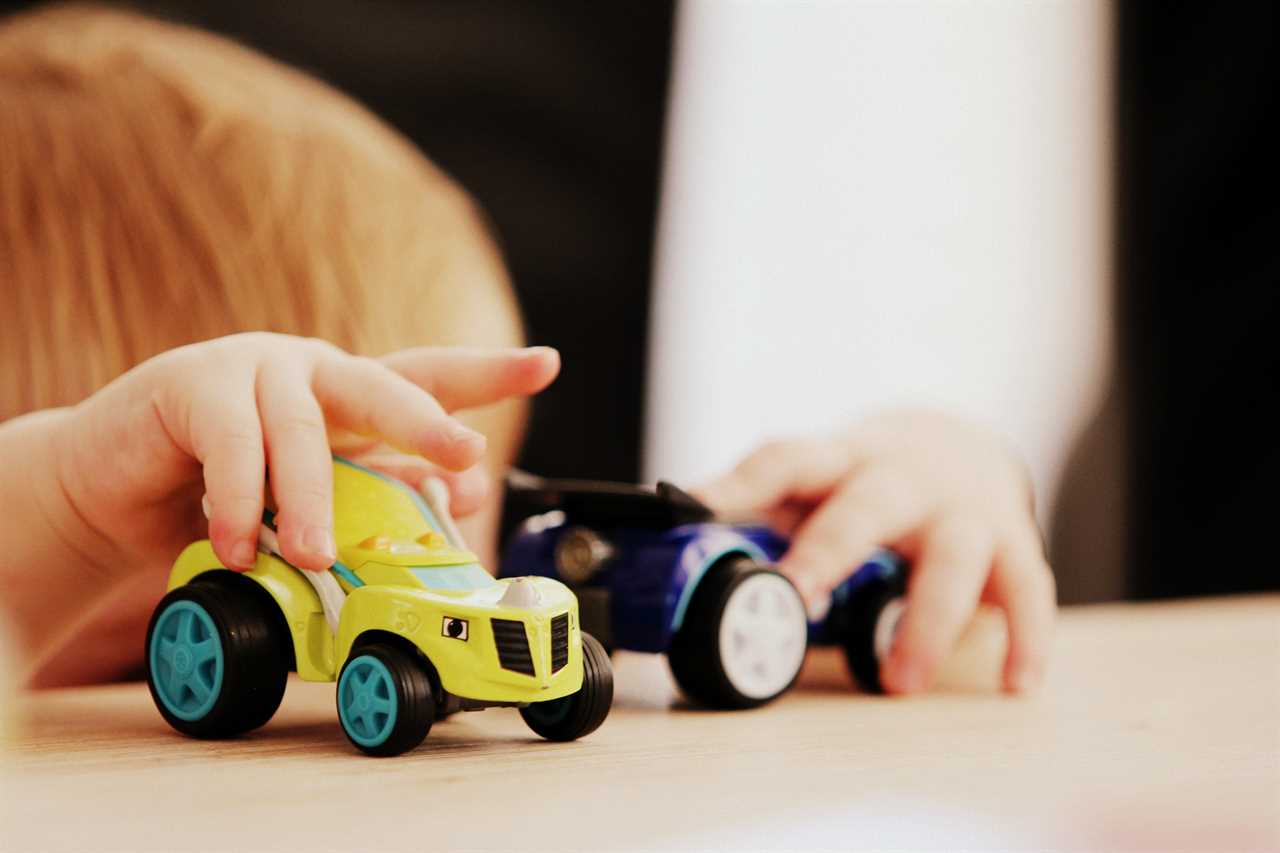
-
DIY Montessori toys: Get creative and make your own Montessori toys using materials you already have at home. There are plenty of DIY Montessori toy ideas available online that are budget-friendly and can be customized to suit your child’s interests and developmental needs.
Cost-Effective DIY Montessori Toy Ideas
Let’s explore some cost-effective DIY Montessori toy ideas that you can easily create at home.
One great option is to upcycle everyday items into Montessori toys. For example, you can turn old cardboard boxes into shape sorters or sensory bins by cutting out different holes and adding various textures.
Another idea is to repurpose empty containers and fill them with different objects, such as dried beans or buttons, for a DIY sound matching game.
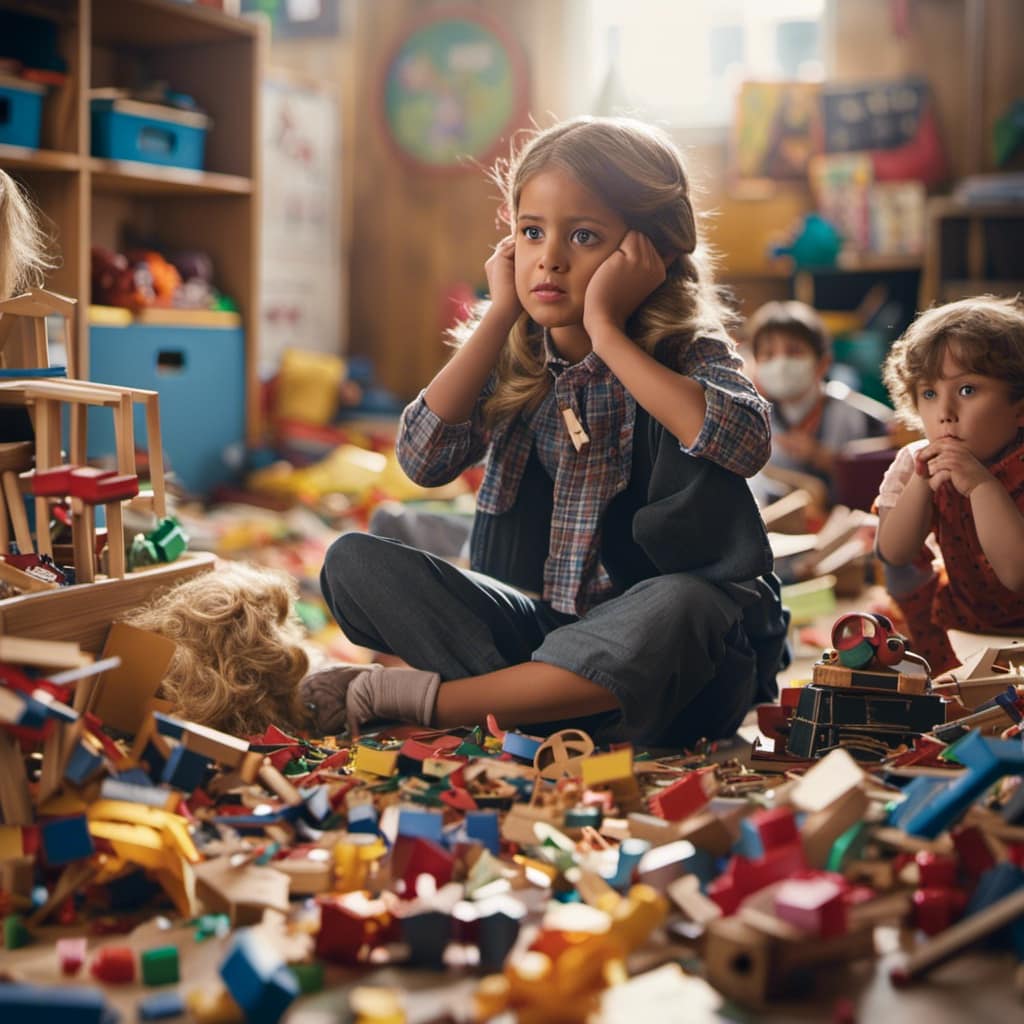
Thrift stores are also a great resource for finding affordable Montessori toys. Look for items like wooden puzzles, stacking toys, or small containers that can be used for sorting activities. With a little creativity and some paint, you can easily transform these thrift store finds into Montessori-inspired toys.
By using upcycled materials and shopping at thrift stores, you can create a variety of Montessori toys without breaking the bank. These DIY projects not only save you money but also promote sustainability and encourage resourcefulness.
Frequently Asked Questions
Are Montessori Toys Only Suitable for Young Children or Can Older Kids Benefit From Them as Well?
Montessori toys are not limited to young children; older kids can also benefit from them. Montessori toys offer unique benefits such as promoting independence and critical thinking, which traditional toys may not provide.
How Long Do Montessori Toys Typically Last Before Needing to Be Replaced?
Montessori toys can last a long time, but their lifespan depends on various factors like quality, materials, and how they are used. It’s important to choose durable toys that can withstand repeated play.
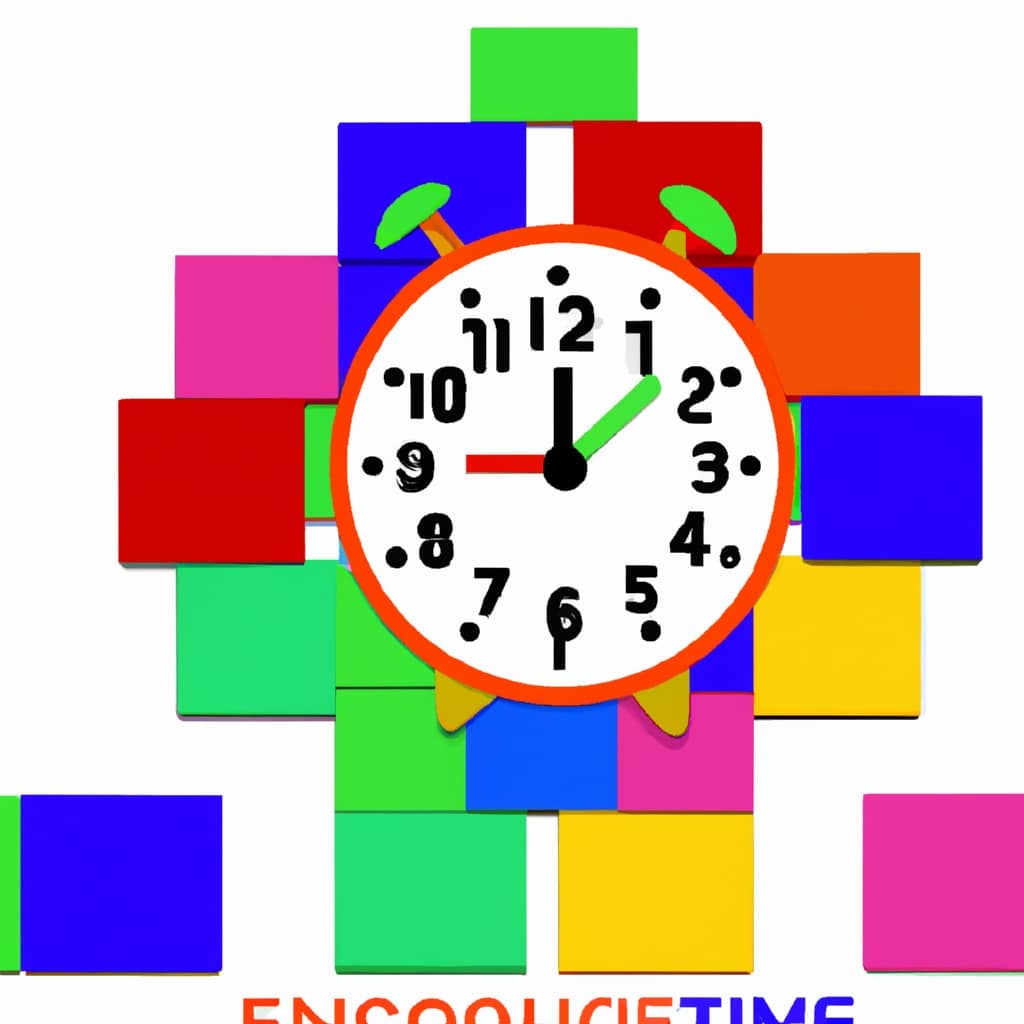
Can Montessori Toys Be Used in a Traditional Classroom Setting or Are They Only for Home Use?
Montessori toys can be used in a traditional classroom setting, not just at home. They offer numerous benefits for older kids, such as fostering independence, promoting problem-solving skills, and encouraging hands-on learning.
Are There Any Safety Concerns to Consider When Using Montessori Toys?
When it comes to Montessori toys, safety concerns are important to consider. However, the benefits for older kids are worth it. Let’s explore how to ensure a safe and enriching play environment.
What Are Some Alternatives to Montessori Toys That Offer Similar Educational Benefits at a Lower Cost?
Looking for budget-friendly alternatives for Montessori toys? Consider DIY Montessori-inspired toys. They offer similar educational benefits at a lower cost. Get creative and engage your little ones in cost-conscious educational play!
Conclusion
In conclusion, finding affordable Montessori toys doesn’t have to be a daunting task. By considering factors that affect costs, exploring budget-friendly brands, and utilizing cost-effective DIY ideas, parents can provide their children with enriching educational toys without breaking the bank.
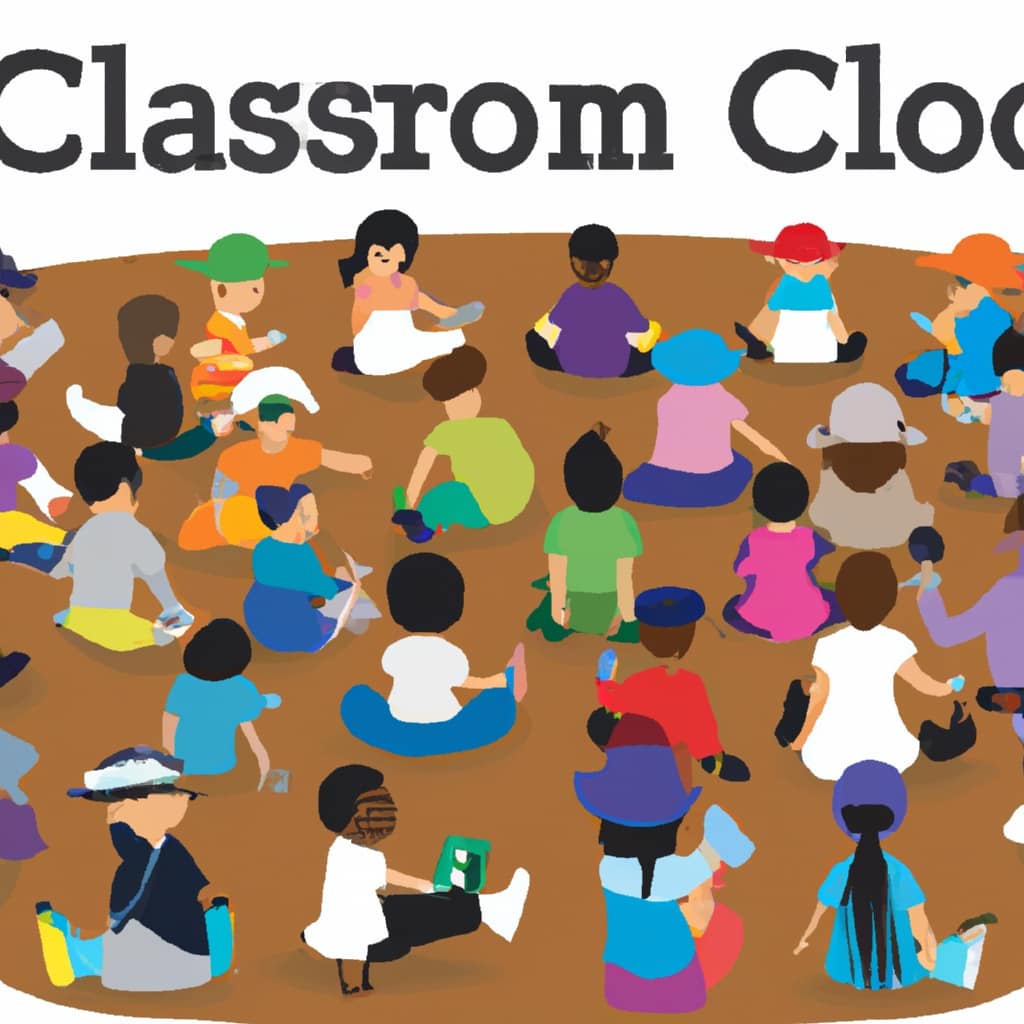
Remember, with a little creativity and resourcefulness, it’s possible to find the perfect Montessori toys that are both economical and engaging. So start your search today and watch your child’s learning journey flourish!
Mila, a gifted writer with a heart brimming with enthusiasm for child development and playful learning, is the creative force behind the enchanting narratives and insightful articles that grace Toddler Ride On Toys. With a background in early childhood education and a genuine passion for nurturing young minds, Mila weaves words that captivate, educate, and inspire parents, caregivers, and educators.
-

 Child Development3 months ago
Child Development3 months agoWhat Is a Theory in Child Development
-

 Child Development3 months ago
Child Development3 months agoThe Science Behind How Parents Affect Child Development
-
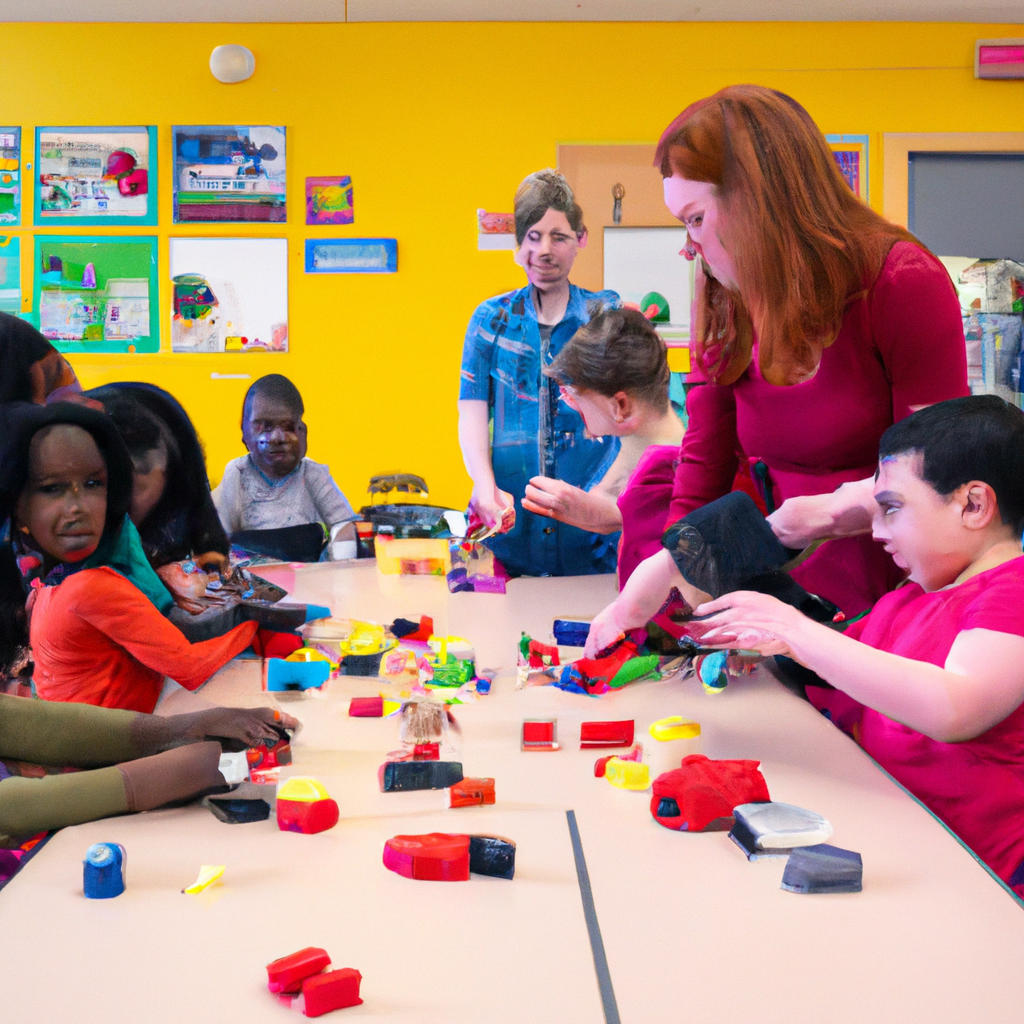
 Child Development3 months ago
Child Development3 months agoWhat Do You Do in Child Development Class in High School
-

 Child Development3 months ago
Child Development3 months agoHow Parenting Styles Affect Child Development
-
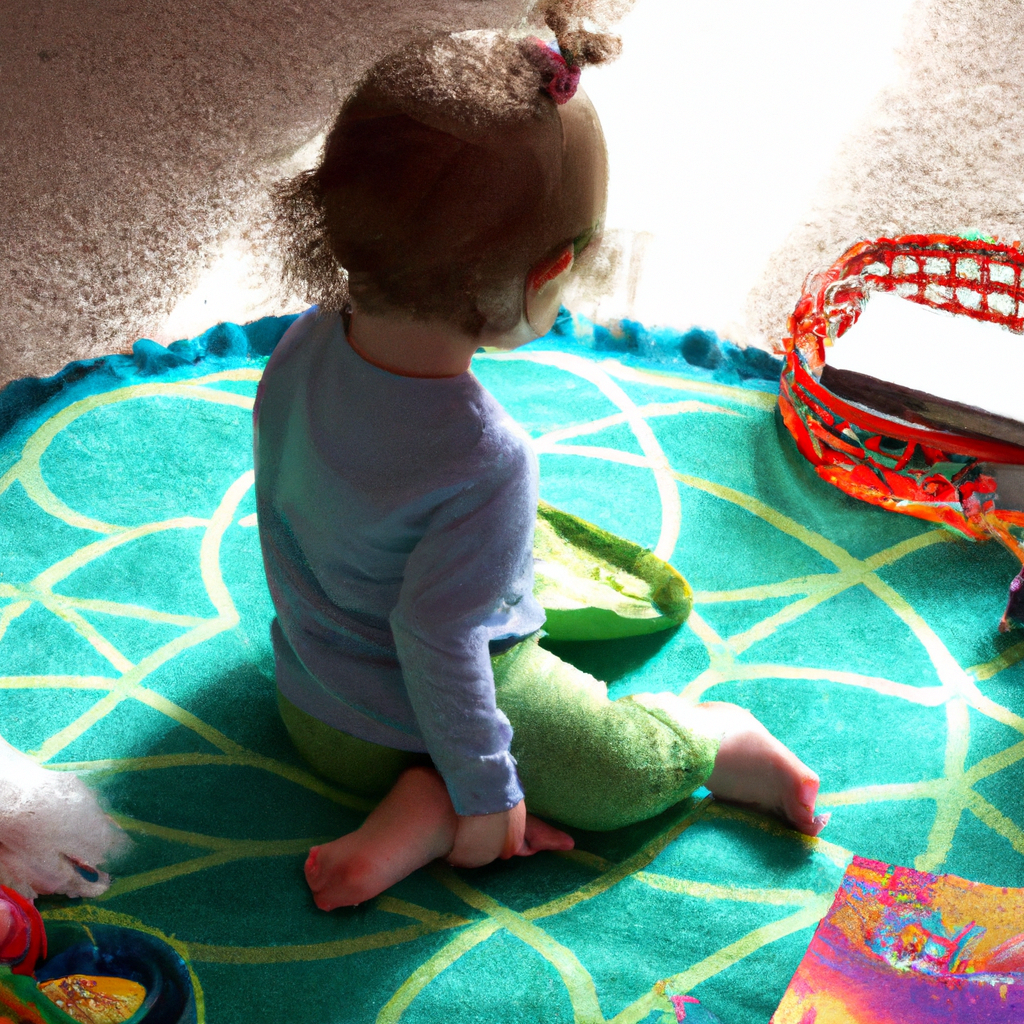
 Child Development3 months ago
Child Development3 months agoWhat Is Child Development?
-
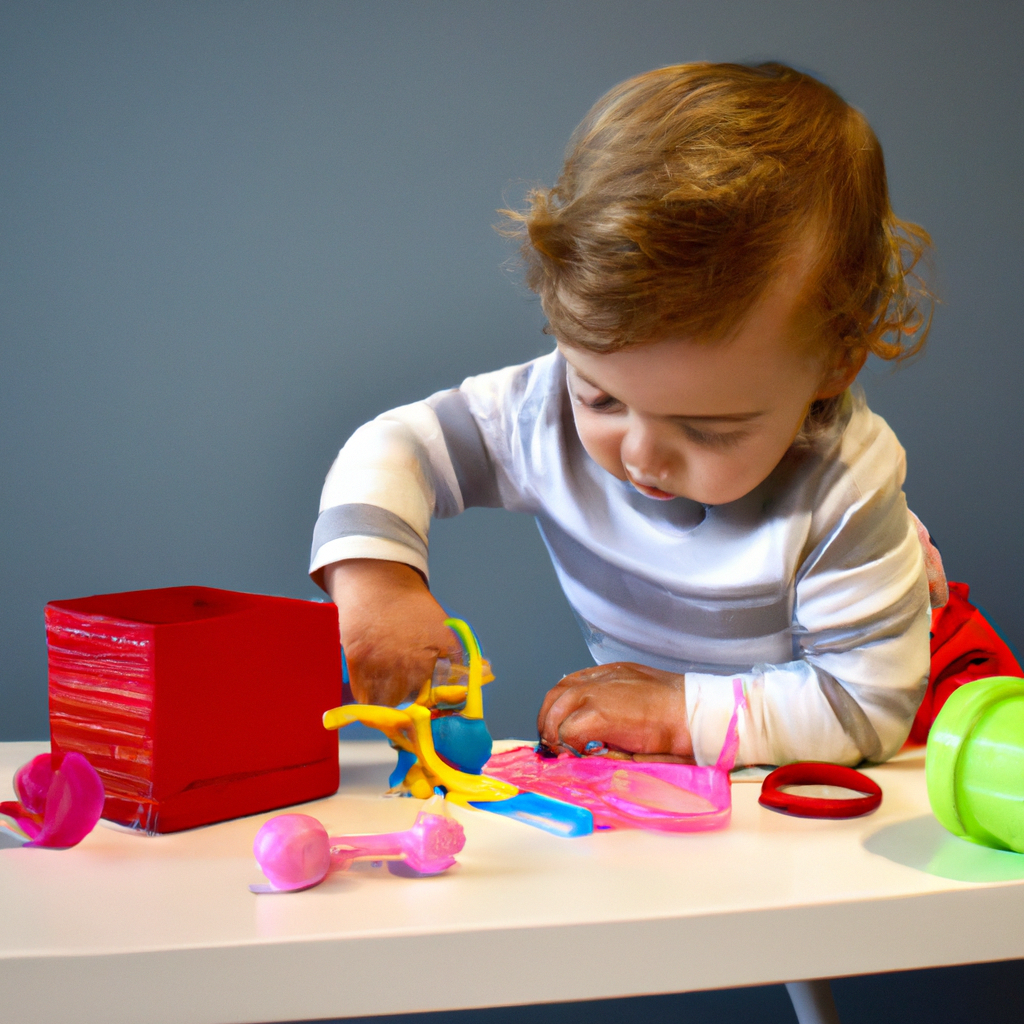
 Child Development3 months ago
Child Development3 months agoHow Does Piaget’s Theory Impact Child Development
-
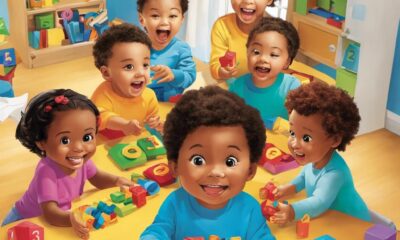
 Preschool Toys6 months ago
Preschool Toys6 months agoTop 8 Interactive Role-Play Toys for Preschoolers Reviewed
-

 Child Development3 months ago
Child Development3 months agoHow Does Food Insecurity Affect Child Development



